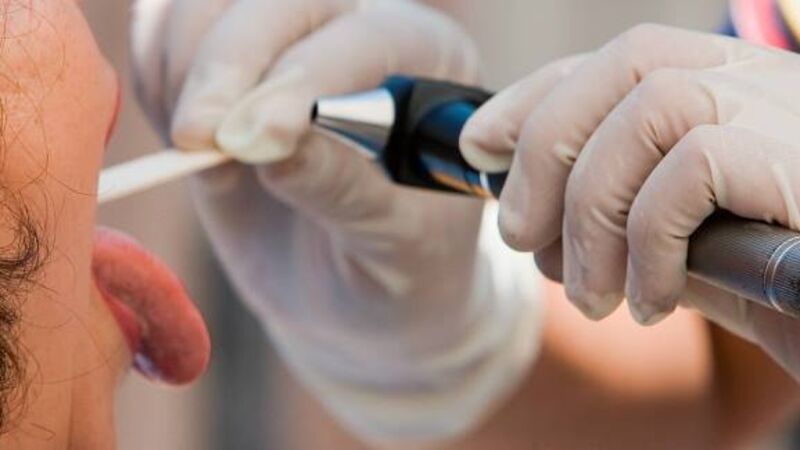To death’s door ... and back again

She went for a regular check-up and was shocked at the HIV positive result. “I thought I would be dead or very sick before my three children grew up,” says Lisa. “The hardest part was telling my children and wondering how the news of their mother’s medical condition might impact their lives. I found I had to accept the diagnosis first before disclosing my illness to anyone.”
Lisa found herself living in isolation for the first few years after her diagnosis. It affected her relationships. “I would not allow myself to get close to people.” Lisa explains: “The thing with HIV is that you roll along fine until you have to disclose your illness to someone, and then you hit a block where you need the help of others.”
Lisa is now in a long-term relationship with a man who has a negative diagnosis and her children are growing up. Watching that has been an absolute joy for her.
Thirty years ago society was introduced to an unknown illness which spread like wildfire. An unexplained phenomenon was occurring worldwide and initially physicians found themselves baffled. The words ‘immune deficiency disorder’ cast a dark cloud over the world of homosexual men. This shadow soon penetrated the lives of intravenous drug users and those practising unprotected sex, gay or not.
In Ireland, the first case of AIDS (acquired immune deficiency syndrome) was detected in a man in 1982, rising to 258 cases by 1991. However, there were 1,146 individuals infected by the HIV virus in 1991 as well, 150 of those were women. According to a report by the Health Protection Surveillance Centre, the numbers of individuals diagnosed with HIV in Ireland are down 16% since 2008.
Tim, 53, spent four years in the seminary training to become a priest before opting to leave the order. He then spent four months at Mount Melleray in an attempt to reconcile his decision. Coming to terms with his sexuality was mind-blowing, but somehow he had always known he was gay.
A barrage of short term relationships followed. “Most of my relationships were casual. I was tested regularly for HIV, and in 2007 I found out I was positive.”
Not only did Tim receive a positive diagnosis, but shortly after the doctors informed him that he had Burkitt Lymphoma, a cancer associated with the HIV/AIDS virus. Although the diagnosis seems grim, he remains optimistic. He runs forty minutes a day. “I had always been a runner. Running keeps my head straight,” he says with a smile.
According to Tim, “those in the HIV positive community often find themselves cut off from the rest of the world. With cancer, everyone is sorry for you and can relate to you, everyone knows someone with cancer. However, in my experience, patients being treated in CUH’s Infectious Disease Clinic do not speak to or look at each other at the clinic, even though they are acquainted.” This conduct can reinforce the isolation felt by people with the disease.
Irene Kidd-Murphy has dedicated twelve years of her life to counselling patients attending the Sexual Health Centre in Cork. The centre provides holistic treatments and support services to clients seeking to enhance their quality of life.
The centre is located off Peter’s Street in Cork, and treats HIV positive clients or those suffering from AIDS. Irene acknowledges the stigma attached to HIV/AIDS is very much alive, 30 years on. “Because there is an attitude that contracting HIV is related to sex, many believe you drew it on yourself and there are huge amounts of judgement there.”
The services at the Sexual Health Centre provide support to these marginalised members of Irish society. “When I was first diagnosed,” recalls Tim, “no one explained to me that there was a support meeting offered at the Sexual Health Centre. Information for services is hard to come by and sometimes people are slow to access the services.”
As a result of his own experiences, Tim would like to help others. “I am in touch with the Dublin AIDS Alliance to see how I can help others come to terms with their illness. There are people who cannot even tell their families that they have a positive HIV diagnosis. People in rural areas have it worse than those living in the cities as access to services is limited. One man I know visits the clinic every three months but tells his mother he is seeing a consultant for his heart.”
Shayne is 56 and his experience with HIV/AIDS has spanned three decades. “I was diagnosed in 1986 by a doctor who informed me that the only other patient he had seen with this diagnosis would be dead within six months.” He says the doctor went on to explain that this man was in an isolated ward in the hospital and his food was fed to him through a slot.
“I rang the man who remains my lifelong partner today and asked him, ‘if you are still interested, can I come and die in your place?’ From 1986 until I decided to close up my life in 1995, I just became sicker and sicker. I was a mirror image of a concentration camp victim. I weighed 55kg, my body was emaciated and my elbows were bigger than my arms.”
Shayne was abroad at the time of his diagnosis and decided to return to the United States where he could avail of the research and cutting edge treatments which were becoming available to people who were HIV positive. “The doctor I was attending had a practice which mainly comprised HIV/AIDS patients.” Shayne found the regimes of the drug so horrific that he decided to combine acupuncture and holistic approaches to help him tolerate the harsh Western medicine.
During this time, he participated in studies with up to 100 volunteers. “After the study, if three of us were left alive, it seemed like success. I spent my twenties and thirties dying and watching everyone I knew die, being on the other side of that is amazing.”
Not only did he participate in trials, but protests as well. He remembers one in front of Wall Street when HIV/AIDS patients lay down in the middle of the street. Their message that day to Congress and Wall Street was clear. If you don’t do something, all of these people will die. I asked what happened to those people? “They all died,” he said.
Things improved for Shayne with a move to Ireland, a full-time job, long-term partner, and the virus has remained non-detectable in his system for a decade now. “I have gone from having no detectable immune system and being on the brink of death, to leading a healthy and quite normal lifestyle. I attend the Infectious Disease Clinic at CUH every three months for blood work, and I’m in a men’s group at the Cork Sexual Health Centre.”
“I have no reason to believe that this will kill me, but every reason to believe, like Lisa, that the side effects of all of the study drugs might.”
Lisa, Tim and Shayne all are thankful for living in an age where the treatment of the disease is not as difficult as it had been previously. Lisa takes more care of herself now. “I have recently changed drugs to a combination therapy of three tablets a day. But I am concerned at times about the effect these tablets are having on my body,” she says. Shayne has moved from a regime of ten tablets a day and being a ‘guinea pig’ to just a few a day.
Certainly the fear and dread associated with a HIV/AIDS diagnosis of the 1980s has been replaced by much more hope for sufferers today. “I have a future. I wasn’t supposed to live to see 1990. I am one of the few lucky people who have been to death’s door and come back again,” says Shayne.
* Sexual Health Centre Cork (021-4276626); Dublin AIDS Alliance (01-8733799)












